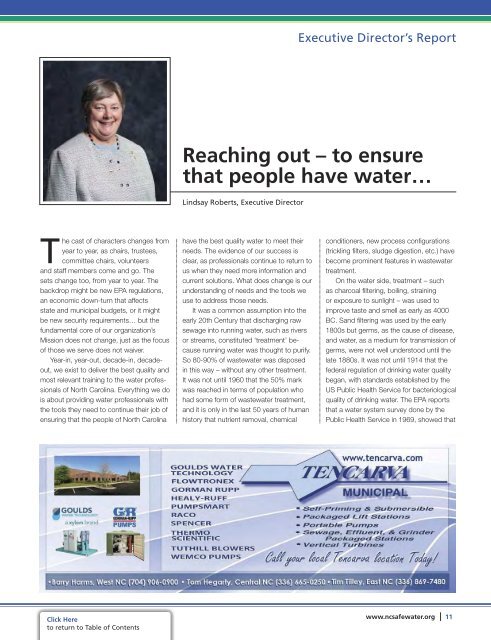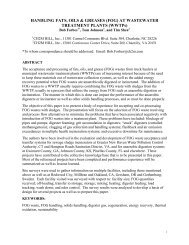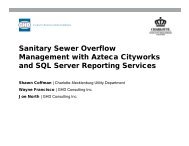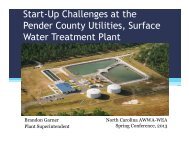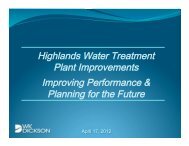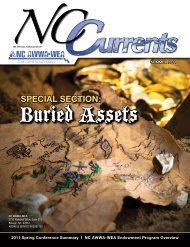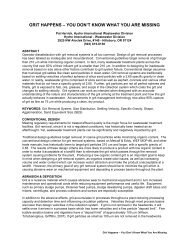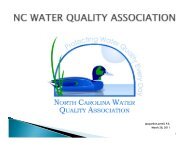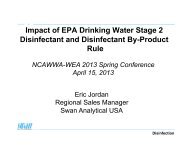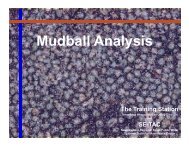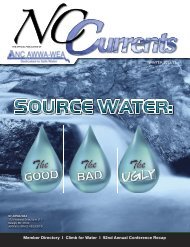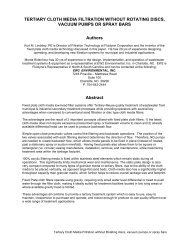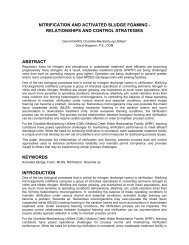Summer 2013 - Public Documents - NC AWWA-WEA
Summer 2013 - Public Documents - NC AWWA-WEA
Summer 2013 - Public Documents - NC AWWA-WEA
You also want an ePaper? Increase the reach of your titles
YUMPU automatically turns print PDFs into web optimized ePapers that Google loves.
Executive Director’s ReportReaching out – to ensurethat people have water…Lindsay Roberts, Executive DirectorThe cast of characters changes fromyear to year, as chairs, trustees,committee chairs, volunteersand staff members come and go. Thesets change too, from year to year. Thebackdrop might be new EPA regulations,an economic down-turn that affectsstate and municipal budgets, or it mightbe new security requirements… but thefundamental core of our organization’sMission does not change, just as the focusof those we serve does not waiver.Year-in, year-out, decade-in, decadeout,we exist to deliver the best quality andmost relevant training to the water professionalsof North Carolina. Everything we dois about providing water professionals withthe tools they need to continue their job ofensuring that the people of North Carolinahave the best quality water to meet theirneeds. The evidence of our success isclear, as professionals continue to return tous when they need more information andcurrent solutions. What does change is ourunderstanding of needs and the tools weuse to address those needs.It was a common assumption into theearly 20th Century that discharging rawsewage into running water, such as riversor streams, constituted ‘treatment’ becauserunning water was thought to purify.So 80-90% of wastewater was disposedin this way – without any other treatment.It was not until 1960 that the 50% markwas reached in terms of population whohad some form of wastewater treatment,and it is only in the last 50 years of humanhistory that nutrient removal, chemicalconditioners, new process configurations(trickling filters, sludge digestion, etc.) havebecome prominent features in wastewatertreatment.On the water side, treatment – suchas charcoal filtering, boiling, strainingor exposure to sunlight – was used toimprove taste and smell as early as 4000BC. Sand filtering was used by the early1800s but germs, as the cause of disease,and water, as a medium for transmission ofgerms, were not well understood until thelate 1880s. It was not until 1914 that thefederal regulation of drinking water qualitybegan, with standards established by theUS <strong>Public</strong> Health Service for bacteriologicalquality of drinking water. The EPA reportsthat a water system survey done by the<strong>Public</strong> Health Service in 1969, showed thatClick Hereto return to Table of Contentswww.ncsafewater.org 11


